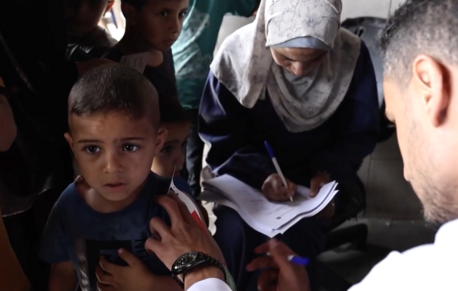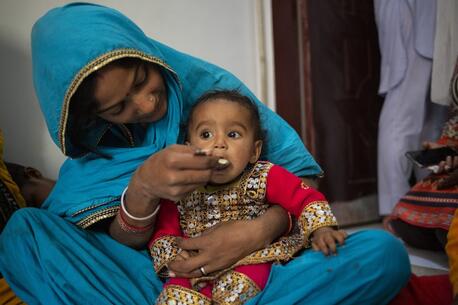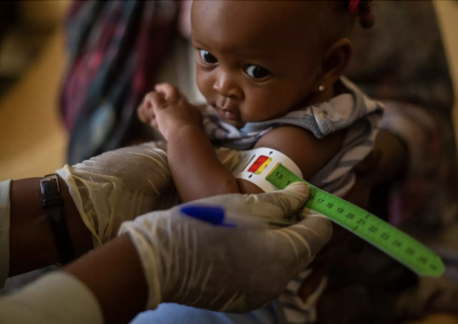How mobile technology can help save children’s lives
Did you know that mobile technology can actually help save children’s lives? I certainly didn’t. But when put to use in the field, especially in remote areas where healthcare may be far away and where information is often difficult to access, a mobile phone can make a life-or-death difference. Mobile phones help span the distance between people who need help and those who can help them, and mobile technology lets data be analyzed quickly, so that children and mothers who need treatment can get it right away.
Texting—we all do it, we all take it for granted, and it’s a great way to quickly get a message across. But did you know that mobile technology, including texting, can actually help save children’s lives? I certainly didn’t.
Put to use in the field, especially in remote areas where health care may be far away and where information is often difficult to access, a mobile phone can make a life-or-death difference. Mobile phones help span the distance between people who need help and those who can help them, and mobile technology lets data be analyzed quickly, so that children and mothers who need treatment can get it right away. Below are some examples of how UNICEF has been using mobile technology to save children’s lives.
 RapidSMS: The use of RapidSMS, which allows even the most basic phones to interact with the web, is perhaps the biggest advance in using mobile technology to save children from malnourishment. So much so, that UNICEF and Columbia University, who together developed the system, received the first-prize in USAID’s Development 2.0 Challenge. In many countries in the world, after a child has been examined it can take weeks or even months for the results of the examination to get back to the health worker. Sometimes, it is too late. Now, a child’s development can be tracked electronically, and treatment recommendations can be made quickly. This way, a child suffering from moderate malnutrition can be identified early on and treated before she slips through the cracks and becomes dangerously malnourished.
HIV and AIDS Prevention is another area where mobile technology is making a lifesaving difference. Due to distance and limited infrastructure, it can take weeks or even months to get back the results of an HIV test. This leads to delayed treatment, and pregnant women often won’t receive their medication in time to stop transmission of the virus to their child. Now results can be received much quicker electronically, so that mothers and children can get the HIV/AIDS treatment they need.
Education and Awareness: Text messaging is a great way to educate families about health issues like AIDS prevention and vaccination. In Zambia, for example, text messages were sent out reminding parents to bring their children to the nearest health center for free vaccinations. Even just one mobile phone within a community can help spread the word through the entire community.
Free text-messaging: Last but not least, bringing texting technology to those who use it most—young people—opens up a vast avenue of communication. In Nepal, a free texting for children program is a great way to learn what is on young people’s and children’s minds—and in which areas they need the most support.
Mobile technology is not only here to stay—it is making a huge difference in child survival! If you, too, would like to use digital technology to help children, you can upload and share a photo of yourself at age five and help us raise awareness about the millions of children each year who won’t reach their fifth birthday.
RapidSMS: The use of RapidSMS, which allows even the most basic phones to interact with the web, is perhaps the biggest advance in using mobile technology to save children from malnourishment. So much so, that UNICEF and Columbia University, who together developed the system, received the first-prize in USAID’s Development 2.0 Challenge. In many countries in the world, after a child has been examined it can take weeks or even months for the results of the examination to get back to the health worker. Sometimes, it is too late. Now, a child’s development can be tracked electronically, and treatment recommendations can be made quickly. This way, a child suffering from moderate malnutrition can be identified early on and treated before she slips through the cracks and becomes dangerously malnourished.
HIV and AIDS Prevention is another area where mobile technology is making a lifesaving difference. Due to distance and limited infrastructure, it can take weeks or even months to get back the results of an HIV test. This leads to delayed treatment, and pregnant women often won’t receive their medication in time to stop transmission of the virus to their child. Now results can be received much quicker electronically, so that mothers and children can get the HIV/AIDS treatment they need.
Education and Awareness: Text messaging is a great way to educate families about health issues like AIDS prevention and vaccination. In Zambia, for example, text messages were sent out reminding parents to bring their children to the nearest health center for free vaccinations. Even just one mobile phone within a community can help spread the word through the entire community.
Free text-messaging: Last but not least, bringing texting technology to those who use it most—young people—opens up a vast avenue of communication. In Nepal, a free texting for children program is a great way to learn what is on young people’s and children’s minds—and in which areas they need the most support.
Mobile technology is not only here to stay—it is making a huge difference in child survival! If you, too, would like to use digital technology to help children, you can upload and share a photo of yourself at age five and help us raise awareness about the millions of children each year who won’t reach their fifth birthday.

RapidSMS mobile phone technology increases the number of infants accurately tested for HIV and drastically reduces parents’ wait time for results.


